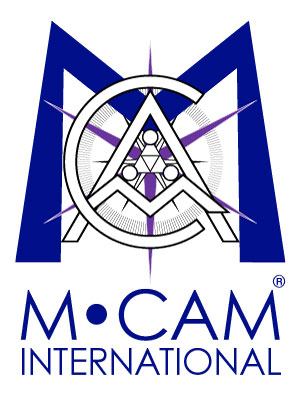Breach of Contract — The True Failure of the Patent System
Date: Tue, 2002-07-23
Dr. David E Martin, CEO, M·CAM, Inc. July 27, 2002 When the framers of the Constitution of the United States decided that patents would be included as the only property right granted to every citizen, they did so with the understanding that a contract is valid only when both parties receive something of value. In exchange for adding valuable insights and innovations into the growth of the American economy, inventors would be granted a limited monopoly to commercially exploit their inventions. A value to the inventor — a value to the citizens of the new republic. The inventor submits a detailed disclosure of an invention that is novel, non-obvious, and practicable. The government develops rules to ensure that, prior to any grant of monopoly rights, a formal review is conducted to evaluate the genuineness of the inventive claims. This review is a safeguard against the granting of rights to multiple parties, or to those who are manipulating the system by submitting that which they do not create, or to parties who unknowingly assert that which was already known. One important part of the patent contract is a concept called “reduction to practice” — the process by which the inventor “educates” others so that the invention, once beyond protection of the patent grant, becomes something of value to others. It is useful to think of this requirement using the metaphor of a recipe. I can tell you the ingredients to make my mother’s homemade bread. However, if you simply place all the ingredients in a bowl, bread is not a likely by-product. In fact, to make the bread, the ingredients must be added in a certain order, certain timing variables must be controlled and certain baking conditions must be met. The patent standard says that an invention disclosure must enable someone “skilled in the art” to reproduce or practice the disclosed invention. As with homemade bread, I cannot patent the concept of baked cereal grains in a loaf-like form. I cannot patent the temporal interruption in yeast metabolism at the precise moment of fermentation thereby producing a thermally impaired environment in which bread results. To patent the bread, I have to tell you how to make it. Back to the contract. Once a government-sanctioned body (in the United States, this entity is the United States Patent & Trademark Office or USPTO) carefully reviews what was known in the past (referred to as “prior art”) and considers the significance of the disclosed invention (non- obviousness and utility), a grant of a monopoly interest may be made. Few patents these days actually provide patent protection on all of the systems, methods, and processes required to create commercial value. Most are reliant, oddly enough, on other patented or non-patented technologies or information. Practical realities not withstanding, the system is supposed to provide the public with access to innovation in exchange for a limited time of commercial exploitation protection. Sadly, the contract with society has been breached. And the very agency charged with protecting the rights of the citizenry has abandoned that responsibility. Ron Stern, President of the Patent Office Professional Association, the union representing patent examiners at the USPTO, recently declared that the most efficient examination finds no prior art. “We know we’re taking shortcuts,” said Stern. The majority of society has allowed this statement to slip past them unnoticed. We cannot. A statement such as this is tantamount to boasting that the FDA is no longer validating drug safety claims or that the Federal Reserve is printing counterfeit $20 bills. Why? Because this means that the contract stipulating that rights are to be granted for limited monopolies ONLY when the conditions of patentability are met is being violated by the very agency charged with the granting of the same. Examiners are not uniformly establishing the novelty or uniqueness of invention, and neither examiners nor the courts, where many patents ultimately are challenged, are applying any gold standard on the adequacy of the recipe. As a matter of fact, apply for the patent on the crust of bread from our little analogy above, and you’ll probably get the patent. After all, a patent was recently issued for peanut butter and jelly sandwiches without the crust! When a contract has been breached, it is incumbent for the potentially damaged party to provide notice of breach to the party that is not performing. Unfortunately, given the magnitude of the problem, a vast majority of those who have noticed the breach have just accepted the fact that the system is broken. The Ministry of Trade in Denmark has recently published studies that find that small and medium-sized companies are decreasing or ceasing patent activity. Their findings indicate that these companies believe that patents granted in the U.S., Europe, and Japan have no value without a considerable litigation war chest to enforce those granted rights. Patents being granted by USPTO, EPO and JPO often fail to have any examination in context with international non-patent and, in many cases, even patent literature. In Japan, Japanese patents are generally not construed in consultation with any non-Japanese data. The examination records and reports acknowledge this amazing statistic. In the name of efficiency, these agencies, charged with the solemn trust to ensure that due process is applied to a careful review of patent applications prior to the granting of rights that can extend 20 years, have abdicated their statutory roles and have elected instead to allow efficiency to preempt their obligations to the American people. But what difference does this make? After all, patents are too abstract for the average person to understand, right? Consider this. If we take the amount of money investors lost in recent cases proving the failure of the public sector to police this contract breach, we find that in one year, the losses exceeded the cumulative budgets of ALL of the world’s patent authorities. In FY2001, these losses exceeded calculated total expenditures for ALL patent authorities for the past 200 years of modern patent office performance. That’s right — retirement funds, investment funds, companies and countries lost more money on bad patents than the world has spent granting patent rights. Fiscal Year 2002 is on track to beat 2001 — a record none of us can afford. Additionally, consumers pay for patent abuses each time they turn on their windshield wipers or call their bank to check account balances. When one sees a bank’s national ad campaign lauding the bank’s commitment to innovation, one should read the fine print in press releases to see that this very commitment to innovation has come at considerable cost in the form of patent dispute resolution. The next time you hear a cell phone ring at an inappropriate time, stop and ask whether the vibration mode patent issued to another telecommunications technology company was examined appropriately. When business cannot place confidence in assets created as part of this contract between society and its innovators, business is impaired and, ultimately, the customer pays. So, if you drive a car with windshield wipers, bank on-line, play ping- pong, swing on a swing, make peanut butter & jelly sandwiches without crusts, take prescription medications, download e-mail, or read this article on-line, chances are that you are paying for a patent that should never have been granted or infringing a patent that you don’t know about, and, all the while, patent offices around the world continue to perpetuate the problem. The lesson learned in the wake of Enron and WorldCom is that, when entities charged with safeguarding the public trust abandon that responsibility, the burden will fall on public shoulders. It’s time for serious reform. It’s time for the Securities & Exchange Commission to require companies to accurately inform their shareholders of the quality of the patents they own and those they license. It’s time for companies and the public to demand a patent system that restores the economic value that patents once were meant to afford. It’s time for the government to demand accountability at the patent office. It’s time to correct this breach in our contract and grant value only to those who are extending true and genuine value in return.


Sorry, the comment form is closed at this time.